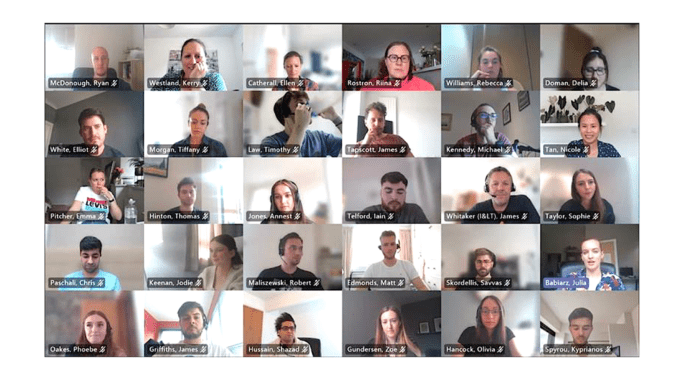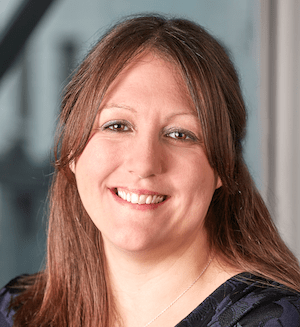
Back in the old days most law firms just had a KM function and some form of ‘keep the lights on’ traditional tech team. Since around 2015 the tech management, innovation, non-legal consulting, and new service delivery needs of law firms have proliferated – in turn leading to multiple interconnected specialists in the business and also something of an organisational challenge.
Addleshaw Goddard is an international law firm that has seen a rapid expansion of its ‘innovation team’, growing from a handful to now a multi-skilled group of 36 people, (see some of the team above).
Kerry Westland, who is a partner and Head of Innovation and Legal Technology, is responsible for managing this ever-growing, and ever more complex, mix of capabilities at the 1,200-lawyer firm.
As she explained to Artificial Lawyer: ‘We have been doing this for seven years now, but over the last six months we decided to look at how to better structure the team.’
There were many moving parts. How could they organise a group that went from experimenting with new tech tools to giving fee-earning consulting advice to clients?
The answer is Addleshaw Goddard’s seven pillars of innovation:
- R&D – Looking at what is coming in terms of new tech and experimenting with it. And how do we use the technology we have now to solve new problems?
- Internal client work – How do we help the lawyers at the firm, especially in terms of helping with a more data-driven approach?
- Client projects – Specific projects that clients come to the firm for. E.g. How to manage a big M&A deal and what tech and processes to apply to this.
- Document lifecycle – Looking at the whole contract lifecycle, with a strong focus on how to get key data out of these documents. This also includes the firm’s contract automation work.
- Products – The firm has developed several of its own products, such as one for due diligence for M&A deals, which is based on HighQ and helps all the parties in a deal to work via a single platform.
- Client relationships – Making sure the firm has the right tools to help their clients.
- Legal tech consulting – Tech consulting arm where clients come to the firm and Addleshaw Goddard helps them with a range of needs, including what tech tools are right for them.
Westland added that each pillar naturally ‘overlaps a bit’ with others, but each one has a dedicated leader from among the overall group.
A more delineated management structure is self-evidently a useful thing to have in a large organisation, but Westland noted that this is also about being more agile and more able to respond to urgent needs.
Before, when something really important for a client landed on the team’s ‘collective desk’ other projects might have had to stop while how to handle this new need was planned. Now they can assign that piece of work to a particular team and the rest of the pillars can continue with their focus.
‘It’s helped us to have more bandwidth,’ Westland added.
I.e. they can do more, not by adding more staff, but simply by removing organisational logjams in their work onboarding.
Artificial Lawyer also noted that the firm was keeping a distinct R&D pillar that would keep experimenting and trying out new technology. Sometimes it can feel that one or two firms have recently taken their foot off the gas when it comes to experimentation with new tools, so this is good to see.
That said, Westland also stressed that their work is also about doing more with what they have in terms of their current tech stack.
Looking ahead, the team has plenty to do. More products to develop. More clients to give advice to. And, one topic Westland is especially interested in is how to better connect the tech tools and workflows they already have in place.
‘We have more tech than ever before, but the challenge is how to combine these tools,’ she said.

This is not made easier by numerous tools all solving part of a problem and then also having plenty of overlapping functions. This overlapping – but not quite identical – array of tools in the market is also something that their clients are well aware of, and need advice on.
There will also be more homemade products to come and there is an ongoing doc automation project using Contract Express. In short, more than enough to keep all seven parts of the group very busy.
And the last question: how are the lawyers at the firm responding?
‘The interest in legal tech is still increasing. The number of projects we work on grows each year, and the lawyers increasingly want to apply technology to their work,’ Westland concluded.
And this growth is going to be supported and driven by Addleshaw Goddard’s seven pillars of innovation.
1 Trackback / Pingback
Comments are closed.